The good, the bad, and the opportunity of regenerative farming in NZ
In November, 2019 a group of 85 farmers gathered in a mixed cropping farm and a dairy farm near Leeston, Canterbury, to find out what they could learn about regenerative agriculture. They marveled at healthy pasture, dug in the rich black foot-deep top soil, heard stories from their peers, and visited some happy, healthy cows. The field day organisers were blown away by the attendance and enthusiasm of the crowd.
Growing a Revolution – watch NZ farmers on a regen ag field day in Leeston, Canterbury showing what can be done farming the regenerative way with less chemicals, carbon emissions and nitrates, showing super-healthy soil and plants growing like crazy.
There is a fast growing movement in New Zealand that has been happening out in paddocks, fields, gardens and hill country across the nation. It is a movement that holds the promise to reshape our productive land use industries towards systems that work with the natural environment to regenerate the land. The movement is that of regenerative agriculture.
We are in the midst of a global pandemic, and facing a very different future than we could have imagined just a few short months ago. Almost every part of our lives is up for re-assessment as much of the global economy and international trade has ground to a halt. COVID-19 has shaken up our very understanding of what is “normal”, presenting a mirror in which we can see the chance to reshape a new future. The situation has been described as a test run for the environmental crises to come if we don’t address climate change, biodiversity loss, and other ecological degradation together. As pointed out by Rod Oram, in a time of great upheaval, we can use this as an opportunity to re-imagine New Zealand’s economy and our agricultural heartland to collectively work better for our planet and people.
Regenerative Agriculture (regen ag) is a term that was first coined by the late Bob Rodale in the 1970’s. He used it to summarise a set of farming principles and practices that enrich soils, improve watersheds, enhance ecosystem services such as soil carbon and nitrogen sequestration, improve biodiversity, and promote farmer and livestock welfare. Definitions and principles vary a little depending on who you talk to (see the resources linked below), and regen ag is achieved through the practices and processes of a number of related land management approaches including; organic farming, holistic land management, permaculture, biodynamic farming, carbon farming, silvopasture, agroecology, and conservation agriculture.
Definitions and Principles of Regenerative Agriculture:
- The Original Principles of Regenerative Agriculture (Rodale Institute)
- Definition of Regenerative Agriculture (Terra Genesis International)
- What is Regenerative Agriculture? (The Carbon Underground)
In the context of agriculture, the terms organic and regenerative are closely linked and are sometimes incorrectly used synonymously, yet they are not the same. Organic agriculture is prescriptive in terms of inputs, eliminating the use of synthetic fertilisers and pesticides, veterinary drugs, genetically modified seeds and breeds, preservatives, additives and irradiation.
Regen ag on the other hand is not just about reducing harm, but seeks to actually improve the health of the land, waterways, the animals that live on it, and people that benefit from it. Taking a whole-system approach, it encourages farmers to pay close attention to what individual pastures, fields, gardens, and plots of land need in order to function more like natural ecosystems, while simultaneously seeking to improve farmer wellbeing and animal welfare. In practice, that might look like zero tillage, continual cover, increased pasture and crop diversity, the use of nitrogen-fixing cover crops, the avoidance of synthetic fertilisers and pesticides, and longer rotational periods for stock to give plants a longer time to recover.
What’s driving the movement?
Largely, it is a recognition that certain conventional methods of farming are doing harm to our environment, to livestock, and to people. The agricultural sector in NZ contributes 48% of our greenhouse gas emissions. The Ministry for the Environment’s 2019 Environment Aotearoa report states that waterways in farming areas are polluted by excess nutrients, pathogens, and sediment. Computer models referenced in that same report estimate that 82% of the river length in pastoral farming areas was not suitable for activities such as swimming during the period 2013–17, based on the predicted average Campylobacter infection risk. Many of the findings unearthed during researching Our Regenerative Future support the suggestion that the widespread adoption of regen ag could help to reverse these trends.
NZ is not alone in facing these challenges. The environmental effects of conventional farming on an industrial scale are being felt across the world, threatening the stability of our planet’s climate and natural capital, placing the global food system at a critical juncture.
The Food and Land use Coalition was set up in 2017 to urgently transform the way we use our land to produce and consume food. With a large number of high-profile, reputable supporters and commissioners, they urge a focus on restoring the soil, conserving and improving biodiversity, and ensuring the health, economic development, social well-being, and social inclusion of the global population – all goals of the regen ag movement. Adoption of regenerative agriculture at a global level also has the potential to help us achieve a number of the UN’s Sustainable Development Goals, including: #2 No Hunger; #3 Good Health & Wellbeing; #6 Clean Water & Sanitation; #8 Good Jobs & Economic Growth; #13 Climate Action; #14 Life Below Water; and #15 Life on Land.
With the rise of plant-based meat and milk alternatives and consumer choices being increasingly driven by health, environmental impact, and transparency, there are big questions hanging over our agricultural industry and NZ’s economic reliance on it. There could be a great advantage for NZ producers to start moving towards products that align more closely with consumer demands, and fetch a premium price on international markets, a sentiment that is shared by New Zealand’s Minister of Agriculture, Damian O’Connor.

Photo: Markus Spiske
In this series, produced for Pure Advantage in collaboration with the Edmund Hillary Fellowship (EHF), and distribution partner Newsroom, I aim to provide a snapshot of the state of regen ag in NZ by telling the stories of those who are either practicing, supporting, studying or observing it objectively, and by presenting some of the challenges and highlighting the opportunities. Many of those who are operating in this field are collaborating across sector boundaries, and embracing complexity in their work. They are the ones who are leading this brave new conversation, and going out on a limb.
Through my many varied conversations, the following themes and considerations have emerged as pertinent to scaling NZ’s nascent regen ag industry to the point where we can begin to achieve positive changes across many environmental, social and economic indicators.
Below are just a few of the levers we need to pull to catalyse the change.
Gathering the data (and finding the right way to interpret it)
While there is no shortage of anecdotal data, empirical evidence on the claimed benefits of regen ag is hard to come by in the NZ context for two main reasons. Firstly because regen ag is relatively new here, and that it can take a long time for scientific indicators to shift. Most of the studies funded so far have been too short-term to provide meaningful insights.
But the second and more pertinent reason is that there is a philosophical tension between reductionist scientific enquiries and the whole-systems view that regen ag actually takes. Reductionist scientific methodologies have contributed to generating the vast majority of our current agronomic knowledge, and as such they have merit. However, problems arise when we rely on linear indicators to make farm management decisions, without taking many others into account. Regen ag by definition views the farm as an interconnected, highly complex, and dynamic system greater than the sum of its parts, a holistic view which is better studied using complex system science and transdisciplinary methods. This kind of science is expensive, and notoriously difficult to do.
Current research undertaken by Manaaki Whenua Landcare Research is investigating the case for regen ag, with several further studies planned. The challenge is to deploy the right methodologies and present the data in a way that provides an overview of an entire ecosystem. Read our story on Soil Ecologist Dr Gwen Grelet, who is one of the scientists leading the work on data collection in NZ.
One of the most compelling cases for regen ag is its potential for carbon sequestration, as outlined by the UN Environment. There is thought leadership and supportive international science across a number of different land management practices, but in NZ the data is sparse and siloed. The current study mentioned above being led by Dr Gwen Grelet includes the measurement of soil carbon across both conventional and regenerative pastures.
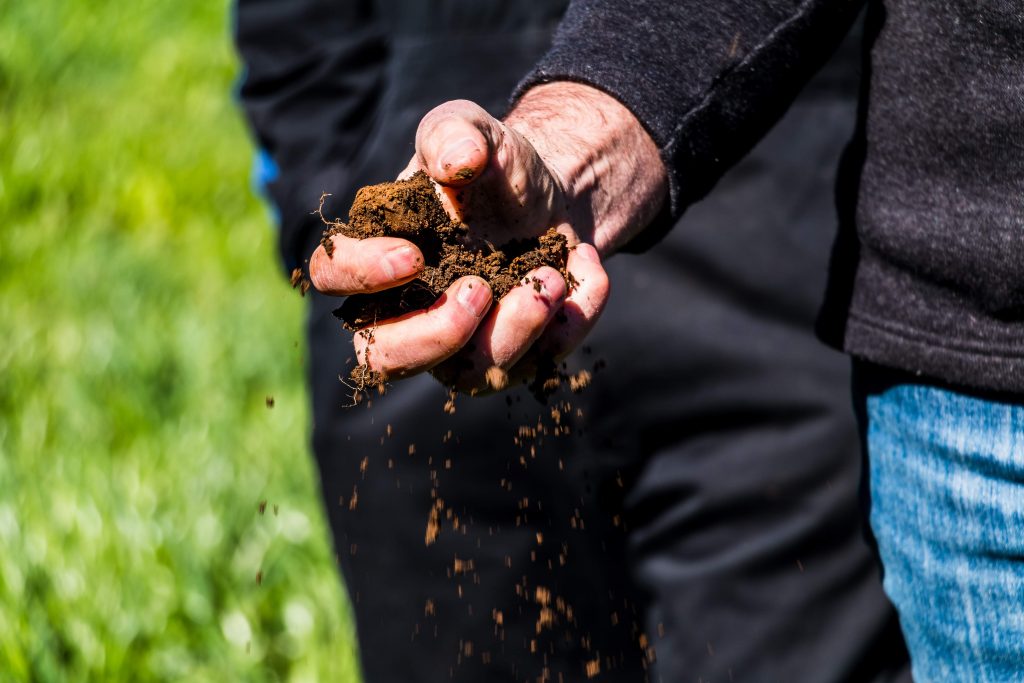
Photo: Mike Taitoko
International studies have shown that greater plant diversity in grassland, one of the common practices of regen ag, improves water infiltration. A recent study conducted on corn crops in the United States, and showcased in Forbes, found that pests were 10-fold more abundant in insecticide-treated corn fields than on insecticide-free regenerative farms, indicating that farmers who proactively design pest-resilient food systems outperform farmers that react to pests chemically. The same study found that while the regenerative farmers had lower yields, they reported 78% higher profits over traditional corn production systems, due to a reduction in input costs, and higher value end markets.
On the organics front, an almost 40-year ongoing study by Rodale Institute has shown that organic farms produce 40% more yields during times of drought as compared to conventional farms, in part due to higher levels of organic soil matter.
Similarly to soil carbon, there is little peer-reviewed science from NZ on the drought resilience of organics, or the suggestion that regen ag reduces nutrient run-off from farms. I came across plenty of anecdotal examples during the process of researching this article, of farmers saying that their pastures retain more water and are more resilient to drought, after they transitioned to regen ag. A partnership between data analytics platform Takiwā and Australian company EcoDetection hopes to provide better insight into levels of nutrient runoff from individual regeneratively managed farms, using state-of-the-art nitrate and nitrite sensors. Read more about that initiative in our story featuring Mike Taitoko.
Certification systems for organic and regeneratively produced foods
Consumers within both domestic and international markets are increasingly seeking to improve their health and reduce their impact on the planet through their food choices. There is a huge market opportunity for premium products, yet NZ food producers lack a standardised enforceable organic seal that would reassure consumers they are buying legitimate organic products. A regenerative organic standard, similar to the one recently launched in the US could be a logical next step – although at present this is a voluntary compliance, non-enforceable seal. Gary Hirshberg, an EHF Fellow and entrepreneur built Stonyfield, the largest organic yoghurt company in the US, offers NZ farmers insight into leveraging the international market for organic and regen ag. Gary is now focused on developing an organics training centre on a property near Motueka. Read Gary’s story here.
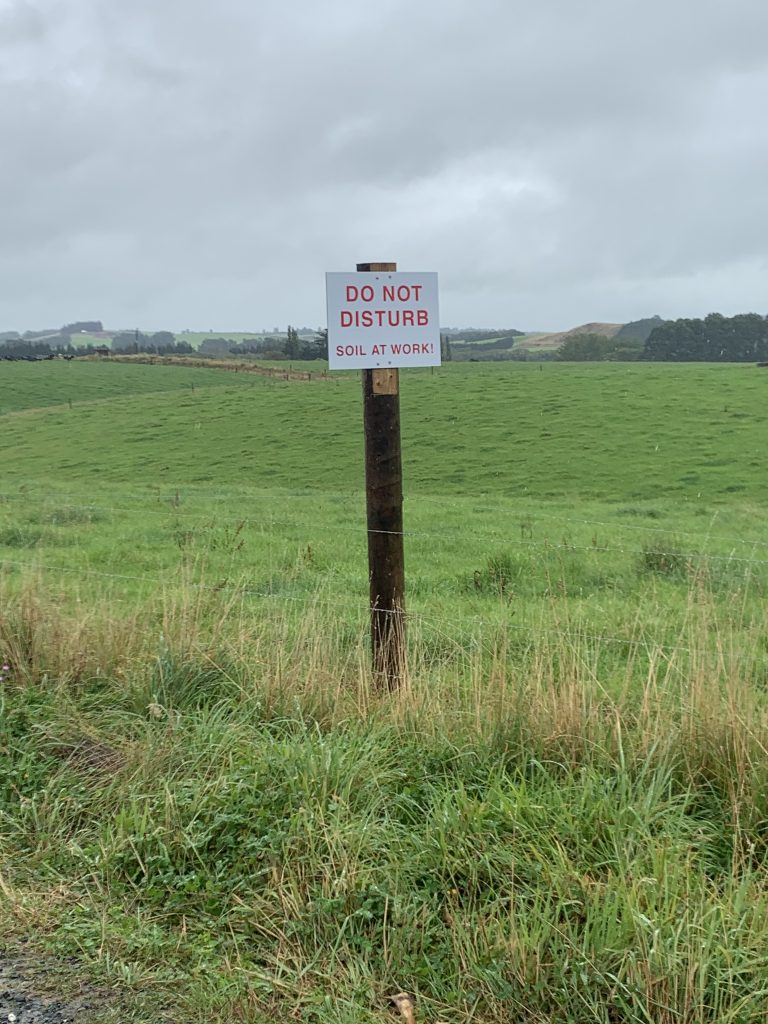
Photo: Mark Anderson
Emerging technology may also provide a means of educating and providing transparency to consumers about the quality of their food, and the corresponding levels of environmental impact associated with their production. The US-based Bionutrient Food Association is currently developing their second prototype of an open source handheld spectrometer that measures the nutrient density of fruits and vegetables, providing real-time data on levels of antioxidants, polyphenols, and flavonoids. Regenerative agriculture nurtures healthy microbial communities and grows carbon stores in the soil, which in turn produces plants with higher brix levels and more nutrient-dense food. For these reasons soil consultant Phyllis Tichinin believes spectrometer technology will be a game changer for agriculture once it becomes widely available. If it is developed into a phone app for example, which Phyllis thinks is inevitable, consumers will be able to make more educated purchasing decisions in the supermarket that align with their desires for higher quality produce, that they can be reasonably sure is farmed in a way that is more sustainable than conventional alternatives.
Government and policy support
After farm subsidies were cut in the 1980’s, the primary source of knowledge and advice for farmers shifted from government sources to industry experts and fertiliser companies. Despite a groundswell of momentum being driven by farmers, experts and advocates around the country, the bulk of the industry has been slow to come on board with regen ag. For instance He Waka Eke Noa, the Primary Sector Climate Change Commitment published in 2019, does not mention regen ag at all. The Primary Sector Council, however, is making some good progress with their Fit for a Better World initiative, while Beef + Lamb NZ has recently announced they are undertaking a global study into regen ag to understand its similarities and differences to NZ farming practices, the opportunities for farmers, and to better understand the global consumer perspective.
Provided that they are properly resourced and supported, these moves hold promise and can help inform the national conversation around land use. While there are calls from some groups to return as quickly as possible to business-as-usual post-COVID, NZ has a unique opportunity to build on our international reputation for innovation, and assist with a transition towards regen ag. Should the Government signal a commitment to better understand the systemic benefits of regenerative practices, and put in place supportive policy with adequate investment into research and science to investigate the potential for NZ, then this could pave the way for a significant transformation of our primary sector towards becoming a truly regenerative system.
The United Kingdom is currently progressing an Agriculture Bill through Parliament that would end EU farm subsidies for productive land use in general, and replace them with subsidies for those farms providing environmental services and public goods, such as planting forests, sequestering carbon in soil, enhancing habitat with pollinator-friendly flowers, and improving public access to the countryside. While the devil will certainly be in the details, it will be an interesting example for New Zealand to watch.
Providing the support scaffolding for farmers to go regenerative
After travelling the globe meeting with 100 farmers across 18 countries, regen ag advocate and researcher Sam Lang found that a significant factor in determining whether farmers made a successful transition to regenerative agriculture was whether or not they had a supportive community alongside them. Sometimes that was their local community, but more often was an online or geographically spread community of like-minded people.
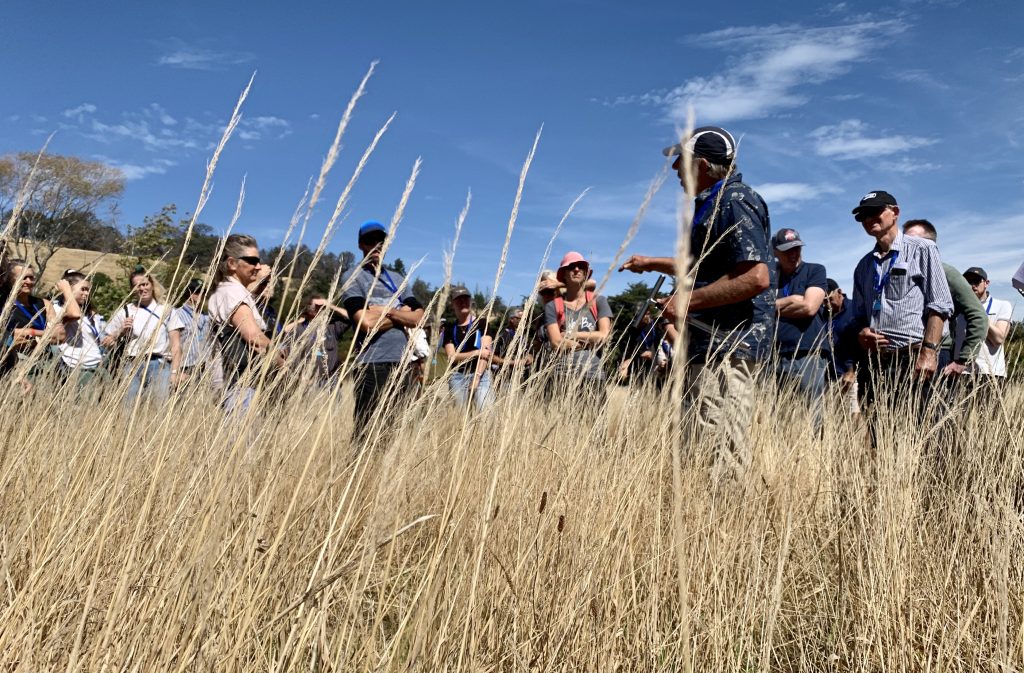
Photo: @planetrumble
Across many different types of farms, those who had a supportive community were consistently more successful in transitioning to regenerative systems. Read our story about Sam and his experiences researching regen ag on a 2016 Nuffield scholarship.
Cerasela Stancu with Envirostrat is taking an even broader approach, and is in the early stages of bringing together a community involving leaders from across the health, nutrition, conservation, academic, and community sectors, to develop a thriving economic system that puts regen ag at the forefront. Read Cerasela’s story here.
Providing funding and coaching
Taking the leap to regen ag practices can be challenging not just in terms of changing land management practices, but with different economic models to focus on as well. Certain farms experience a temporary decrease in yields for the first few years, although margins can be higher due to reduced spending on fertiliser and improved animal health. Mike Taitoko, mentioned above, also hopes to address the funding gap by providing the much needed bridge of accountability between investment and measurable impacts through his new company Toha.
Reducing our reliance on chemical fertilisers
NZ’s reliance on imported chemical fertilisers, combined with conventional methods of farming such as intensification has led to a number of systemic and environmental problems. Nitrogen leaks through shallow-rooted pasture and spurs algal growth in rivers, which can also lead to the suppression of aquatic life. Of NZ’s total river length, 70% had modelled nitrogen concentrations above the expected range for natural conditions between 2013 and 2017. NZ also is complicit in the production of “blood phosphate”, as the only country in the western world that imports phosphate from Western Sahara, a territory occupied by Morocco since the 70’s in a move that has received condemnation from the UN. Read our story featuring Kay Baxter of the Koanga Institute, and how she is tapping into natural sources of plant nutrients.
Supporting rural mental health
It has been a long-standing trend in NZ that farmers have higher rates of mental illness than other sectors of the population. Influencing factors include financial stress and high levels of debt, isolation, family issues, increasingly unpredictable climatic patterns causing adverse weather events, and fluctuating global markets over which farmers have no control. Suicide rates among rural males in NZ are significantly higher than the rate for urban males, with an average of 26 deaths per 100,000 population in rural areas, compared to 16.7 male deaths in urban settings between 2007 and 2016.
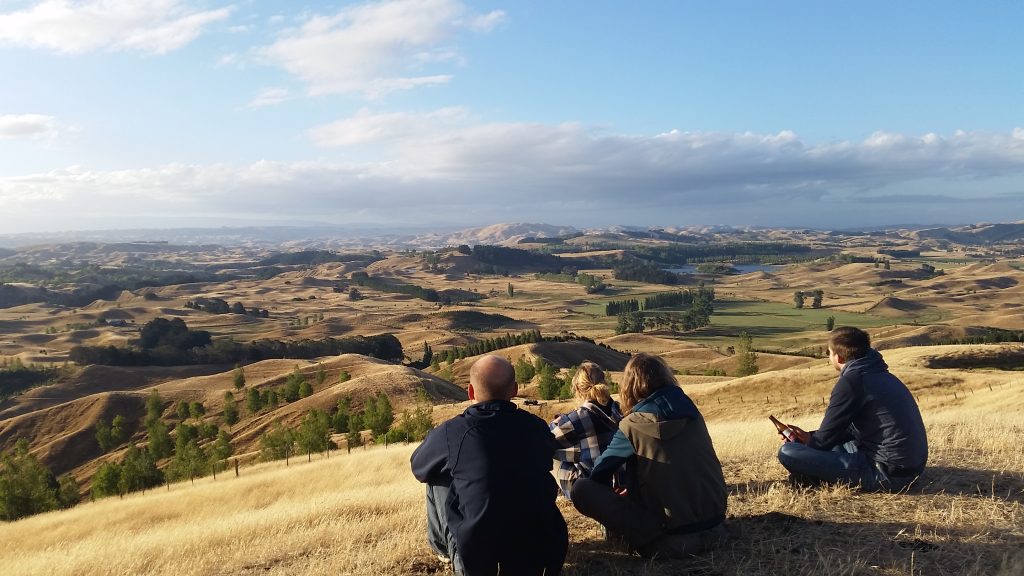
Photo: Sam Lang
A 2018 study commissioned by Australia’s National Environmental Science Program and covered by holistic farming advocate John King for Pure Advantage showed that regenerative graziers in NSW experienced a meaningful and significant wellbeing advantage compared to conventional local farmers matched for gender and age. Regenerative graziers also reported higher ‘farming self-efficacy’ – confidence in their ability to successfully manage different aspects of their farm. Read our story featuring Jono Frew who is helping build a community of support for regenerative farmers in NZ through Quorum Sense, and reporting improvements in farmer happiness and wellbeing.
Tapping into indigenous wisdom
The term regenerative agriculture is reasonably new, yet at its core essence, the philosophy towards land management has been practiced by indigenous communities across the world for many generations, including Māori. The Toha Calm the Farm initiative, mentioned above, has partnered with the Federation of Māori Authorities (FOMA) to assist Māori-run farms in the transition to regenerative and biological methods of farming through FOMA’s Whenua Ora Tangata Ora programme.
Integrated and collectively owned business models that combine land regeneration, employment initiatives, and a multi-generational view, such as those being taken by Wakatū, provide great examples of how whole-systems approaches can deliver value across environmental, social, cultural and economic indicators.
Closing thoughts
New Zealand farmers are regarded internationally as some of the most accomplished stewards of their land, from which they produce food for Kiwis and international markets. Yet farmers face new challenges on several fronts from climate change, new environmental standards and changing consumer trends. Farmers are central to an economic system involving banks and fertiliser companies, and a long-standing narrative that embeds conventional and commercial methods of farming that are incongruent with regenerative practices. The collective thinking behind Our Regenerative Future is that NZ farmers have much to gain if they can find ways to join up and share the knowledge that could amplify regenerative practices. One approach is to support leaders who can help shape policy designed to unlock research funding and stimulate innovation. Another approach is to enable rural communities with the know-how to ensure the NZ ag sector gains a more substantive footing in the global regen ag space.
At the risk of crystal ball gazing, early indications suggest that NZ’s early and decisive response to control COVID-19 could be held up as a positive global example, further strengthening our reputation for innovative thinking and collective action. With so many of the moving parts of our economy at a standstill, we have been gifted a chance to extend beyond the inertia of our agricultural model, and reshape it to help heal the land.
Perhaps the biggest transition that we need to make is shifting the mindset towards managing agricultural systems regeneratively. In the conventional model a farmer asks a reductive, linear question: “What is the current problem, and how do I solve it?”. The regenerative farmer, on the other hand, will ask a holistic question, “How do I optimise my system to work better, so that fewer problems arise?”
Having taken a deep dive into regen ag for this series interviewing many people who are involved in various ways, I propose that the latter question is the right one to be asking for our agricultural economy, our environment, and for our global climate system.
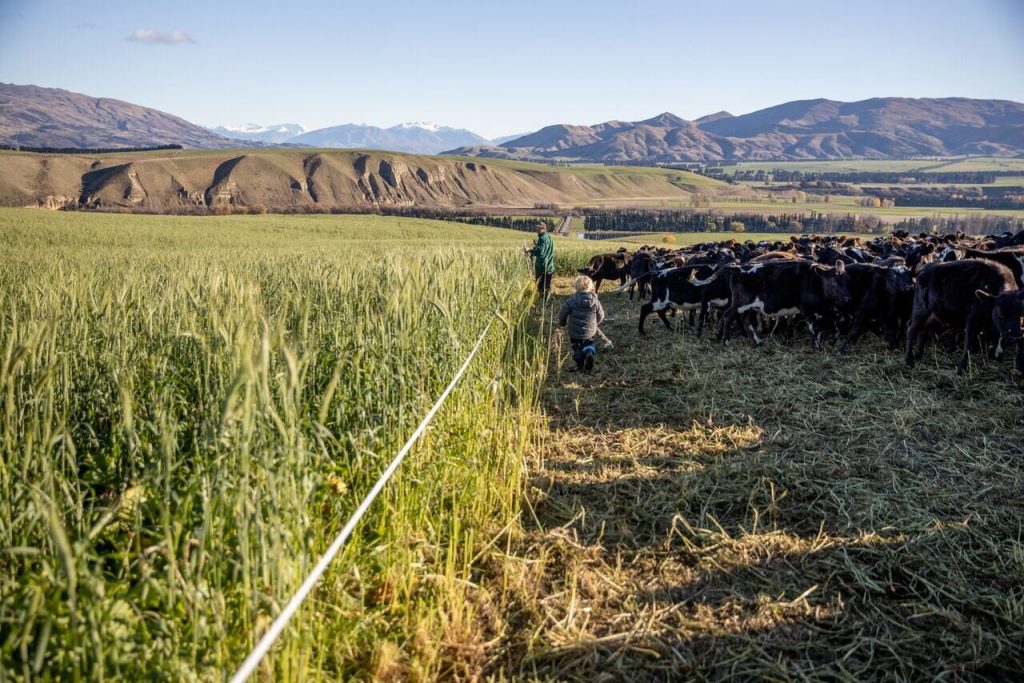
Photo: Camilla Rutherford @camillarutherford_photography
This story is part of a series called ‘Our Regenerative Future’ produced in collaboration with Edmund Hillary Fellowship which investigates the current state of regenerative agriculture in New Zealand, and highlights future opportunities for the country’s primary production sector.
See Alina on Pure Advantage TV
Back To Our Regenerative Future
Alina Siegfried




Leave a comment